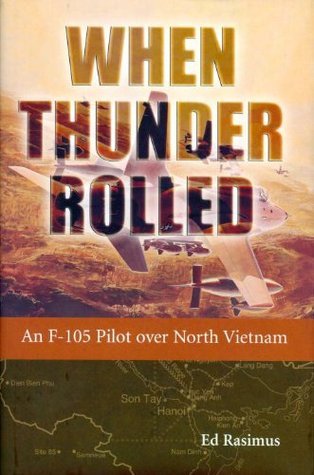What do you think?
Rate this book


272 pages, Kindle Edition
First published February 1, 2003
The losses were appalling. The class of nine that had been six weeks ahead of mine at Nellis lost four. The class that followed me lost five out of nine. The first short course class of “universally assignable” pilots lost fifteen out of sixteen, all either killed or captured. My group of nine had three shot down during the hundred missions but all were recovered successfully and went on to finish. Karl [Richter] was our only loss, and that was on his second tour. The Newsweek statistic that a 105 pilot was shot down on average once every sixty-five missions was true. For every five pilots that started the tour, three would not complete it.The Vietnam War, in some manner, has some parallels with the current conflict in Afghanistan. Where there is less political intrusion into the operational and tactical level (albeit there are a great number of justifiable restrictions in Afghanistan, ala ‘Tactical Patience’). The most important parallel that I identified from When Thunder Rolled was the growing lack of interest in the day-to-day efforts and exertions of the Soldiers, Marines, Airmen and Sailors serving in the Afghanistan effort. Vietnam was different from Afghanistan, where the spirit of protest against Afghanistan is clearly not the same as it was in Southeast Asia. However, common between Vietnam and Afghanistan is a deeply underlying sense of ambivalence to the end state of combat effort:
It’s thirty-five years since that summer of ’66, and the view of the war today is only slightly clearer than it was then. We don’t know yet why we were there or what the objective was. We can’t define a national self-interest for involvement in Southeast Asia, nor has anyone told us why we squandered such a valuable treasure of manpower and machines. We should know, but we don’t....Like Vietnam, the interest of creating a self-sustaining successful conclusion of combat operations in Afghanistan is waning in the public and political interest of the American people. The growing momentum favors finding the exit ramp, even should that come at the cost of the stated end state of a self-sustaining and secure Afghanistan. This deeply-seeded paradigm, like it did in Vietnam, creates dissonance between the desired end-state and the lines of effort that are required to create such an end-state.
Looking at the various levels of involvement in Rolling Thunder, we can see the lieutenants doing what was asked of them without question. We trusted our leaders and our senior decision makers to give us a mission with a purpose. They had a moral obligation not to waste our lives without meaning. They would decide when war was necessary and what we had to do to win it. In return for that, we would risk our lives and do the job. We would fly and fight because, as the sign in the Korat briefing room reminded us daily, that was the mission of the United States Air Force. All we asked was that we be allowed to win.
The captains and majors had the benefit of experience. Some had been in Korea and faced the challenge of overcoming their fears in that earlier war, but all of them had the hours of flying time that helped them handle the tasks thrust upon them. They fought and died, doing the job that they had been asked to do. They led the trusting lieutenants, sometimes competently, and sometimes reaching too far. Occasionally they failed, but they did the best they could.
The colonels and the generals were the failures. They let us down by failing to challenge our country’s political leadership. They had an obligation to follow the orders of the duly elected administration, but they needed to demand clear tasking and reasonable rules under which to conduct the war.... If one isn’t willing to win, then one shouldn’t risk defeat. Fighting with no purpose is the true immorality of war because it means you are asking your citizens to die for no reason…. Dying for one’s country is no longer noble when your country doesn’t care either way about the outcome...
The real enemy was us, ourselves. We couldn’t be beaten by a third-rate country on the other side of the globe, no matter how well equipped and motivated they might be. We could only be beaten by ourselves.(emphasis mine)